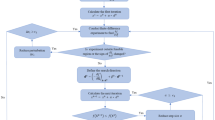Abstract
In the article, a design and experimental study of the non-traditional turning tool is carried out and compared to commercial tools. The quality and the efficiency of the machining process is considerably affected by the cutting tools, there being a tendency to look for new non-traditional tools and their geometry. One such tool is a tool with a linear cutting edge. Research into its application towards machining capabilities and its comparison to the classical, mass produced, tools was the goal of this investigation. For this reason, the tools were designed at FMT TU Kosice with the seat in Presov to find new solutions to preserve the tool’s advantages and eliminate its disadvantages. After tool designing, various types of experiments were carried out, dealing with the roughness of machined surface and the turning force. The shapes of the chips and life time of the tools were investigated together with the technological aspects (i.e. feed and speed). Regression analysis and the finitary method of matrix inversion were selected as the methods to interpret the experimental results. The results show that a tool with a linear cutting edge achieves lower values of the surface profile parameter Rz at higher feeds, compared to a commercial tool, which is especially designed to finish the turning operations. On the other hand, from the point of view of energy consumption, the selected commercial tool is more effective. These findings will enable the producer to make a better decision on which type of tool should be used for machining in specific conditions to achieve the best machined surface quality at the required level of energy consumption.
Similar content being viewed by others
References
Vasilko K (2012) Analytical theory of machining. TU Kosice, Kosice
Neslusan M, Mrkvica I, Konderla R (2011) Deformation after heat treatment and their influence on cutting process. Technical Gazette 18(4):601–608
Janac A, Batora B, Baranek I, Lipa Z (2004) Technology of machining. STU, Bratislava
Temucin T, Tozan H, Valicek J et al (2013) A fuzzy based decision support model for non-traditional machining process selection. Technical Gazette 20(5):787–793
Cep R, Janasek A, Valicek J et al (2011) Testing of greenleaf ceramic cutting tools with an interrupted cutting. Technical Gazette 18(3):327–332
Brandao LC, Neves FO, Nocelli GC (2011) Evaluation of hole quality in hardened steel with high-speed drilling using different cooling systems, Advances in Mechanical Engineering, Vol. 1,
Hutyrova Z, Zajac J (2013) Turning of composite material with organic reinforcement. Adv Sci Lett 19(3):877–880
Jurko J, Panda A, Behun M (2013) Prediction of a new form of the cutting tool according to achieve the desired surface quality. Appl Mech Mater 268–270:473–476
Demec P (2012) Theoretical bases of virtual machining. Int Sci Herald 3(2):37–45
Nadolny K, Plichta J, Herman D, Slowinski B (2008) Single-pass grinding—an effective manufacturing method for finishing. 19th International Conference on Systems Engineering—ICSENG 2008, August 19–21, University of Nevada, Las Vegas
Blagodarny V, Pavlenko S, Pasko J (2001) Accelerated wear test of machine parts, 42nd International Conference of the Departments of machine parts and mechanisms, VSB-Technical University of Ostrava, Czech Republic, pp. 16–18
Saini S, Ahuja IS, Sharma VS (2012) Influence of cutting parameters on tool wear and surface roughness in hard turning of AISI H11 tool steel using ceramic tools. Int J Precis Eng Manuf 13(8):1295–1302
Vasilko K (1992) A cutting tool with a new geometry of the cutting part and its applications. Transactions of the Technical University of Kosice. 4, TU Kosice, Kosice, Slovakia, pp. 120–130,
Kovac J, Mihok J (2013) Industrial engineering. TU Kosice, Kosice
Kral J et al (2009) Technological and information factors of machining. TU Kosice, Kosice
Monka P (1996) Machining with linear cutting edge. Adv Manuf Syst Technol 372:777–784
Monkova K, Monka P (2011) Experimental verification of machined surface roughness achieved by various cutting tools. Proc Manuf Syst 6(1):49–52
Monkova K (2013) Surface roughness characteristics of polyamide APA after the turning by unconventional cutting tool. Adv Mater Res 702:263–268
Filippov АV, Filippova EO (2015) Determination of cutting forces in oblique cutting. Appl Mech Mater 756:659–664
Pilc J, Demec P, Cilikova M (2008) Construction of manufacturing machines, current trends. Mech Eng 12(11):8–9
Michal P et al (2014) Mathematical modelling and optimization of technological process using design of experiments methodology. Appl Mech Mater 616:61–68
Krehel R, Dobransky J, Krenicky T (2009) Mathematical model of technological processes with prediction of operating determining value. Acta Technica Corviniensis Bull Eng 2(4):39–42
Berger BS, Rokni M, Minis I (1992) The nonlinear dynamics of metal-cutting. Int J Eng Sci 30(10):1433–1440
Author information
Authors and Affiliations
Corresponding author
Ethics declarations
Conflict of interest
The authors declare that they have no competing interests.
Rights and permissions
About this article
Cite this article
Monka, P., Monkova, K., Balara, M. et al. Design and experimental study of turning tools with linear cutting edges and comparison to commercial tools. Int J Adv Manuf Technol 85, 2325–2343 (2016). https://doi.org/10.1007/s00170-015-8065-3
Received:
Accepted:
Published:
Issue Date:
DOI: https://doi.org/10.1007/s00170-015-8065-3




